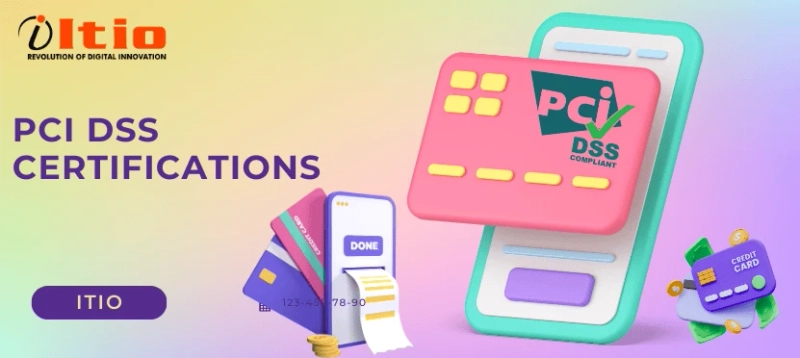Introduction to PCI DSS
What is PCI DSS?
PCI DSS stands for Payment Card Industry Data Security Standard. It’s a global framework designed to secure credit card and payment information. Developed by major credit card brands like Visa, Mastercard, and American Express, it sets the gold standard for payment data security.
The Purpose of PCI DSS
The primary goal of PCI DSS Certifications is to protect cardholder data. Whether you're a small business or a global enterprise, if you handle, store, or transmit credit card information, PCI DSS compliance isn’t optional—it’s mandatory.
Who Needs to Comply?
Any organization that accepts credit or debit cards must comply. This includes:
- E-commerce sites
- Retailers
- Payment processors
- SaaS platforms with payment features
The History and Evolution of PCI DSS
Formation of PCI Security Standards Council
In 2006, the PCI Security Standards Council (PCI SSC) was created by major card networks to unify data security standards. The Council maintains and updates PCI DSS.
Versions and Updates Over Time
PCI DSS has gone through several updates, with PCI DSS 4.0 being the latest release. Each version reflects modern cybersecurity threats and evolving payment technologies.
PCI DSS Requirements Overview
The 12 Core Requirements
PCI DSS is structured around 12 key requirements grouped into 6 categories:
- Install and maintain a firewall
- Avoid using vendor-supplied defaults
- Protect stored cardholder data
- Encrypt data during transmission
- Use antivirus software
- Develop secure systems
- Restrict access to data
- Assign unique IDs to users
- Restrict physical access
- Monitor and log activity
- Test systems regularly
- Maintain an info security policy
Technical and Operational Components
From firewall configurations to encryption protocols, PCI DSS covers both technical systems and human operations—because security is everyone's job.
Importance of Compliance for Businesses
Non-compliance can lead to heavy fines, data breaches, and loss of customer trust. In today’s world, security is your brand.
Levels of PCI DSS Compliance
The level depends on your annual transaction volume:
Level 1
- Over 6 million transactions/year
- Must complete ROC with a QSA
Level 2
- 1 to 6 million transactions/year
- SAQ or QSA assessment
Level 3
- 20,000 to 1 million e-commerce transactions/year
- SAQ required
Level 4
- Fewer than 20,000 e-commerce or 1 million other transactions
- Simplified SAQ process
PCI DSS Certification Process
Self-Assessment Questionnaire (SAQ)
A SAQ is a self-validation tool for merchants and service providers. It's a detailed checklist that evaluates how well you meet PCI requirements.
Qualified Security Assessor (QSA) Audits
A QSA is a certified expert authorized by PCI SSC to perform onsite audits, especially for Level 1 merchants.
Report on Compliance (ROC)
The ROC is a formal report generated after a successful QSA audit. It’s submitted to banks and card brands as proof of compliance.
Steps to Achieve PCI DSS Certification
Scope Determination
Identify which systems, applications, and processes fall under PCI scope. This includes networks, POS systems, and payment gateways.
Gap Analysis
Compare your current setup with PCI requirements to find weaknesses or "gaps."
Remediation Plan
Fix the issues found in the gap analysis. This could mean updating firewalls, patching systems, or employee training.
Final Assessment and Submission
Complete the SAQ or go through a QSA audit, then submit your ROC to stakeholders.
Benefits of PCI DSS Certification
Enhanced Security
Being certified means you're actively reducing the risk of data breaches, malware, and internal threats.
Building Customer Trust
Consumers feel safer when businesses demonstrate strong data protection practices.
Reduced Risk of Fines and Breaches
Fines from card brands and regulators can be steep—PCI DSS helps avoid costly penalties.
Challenges in PCI DSS Compliance
Complexity of Requirements
With 12 requirements and over 300 sub-requirements, PCI DSS isn’t light reading. It requires dedicated teams and expertise.
Resource and Budget Constraints
Small businesses often struggle with the costs of tools, audits, and security staff.
Maintaining Compliance Continuously
Compliance isn’t a one-time job—it’s ongoing. Systems evolve, threats change, and audits return every year.



